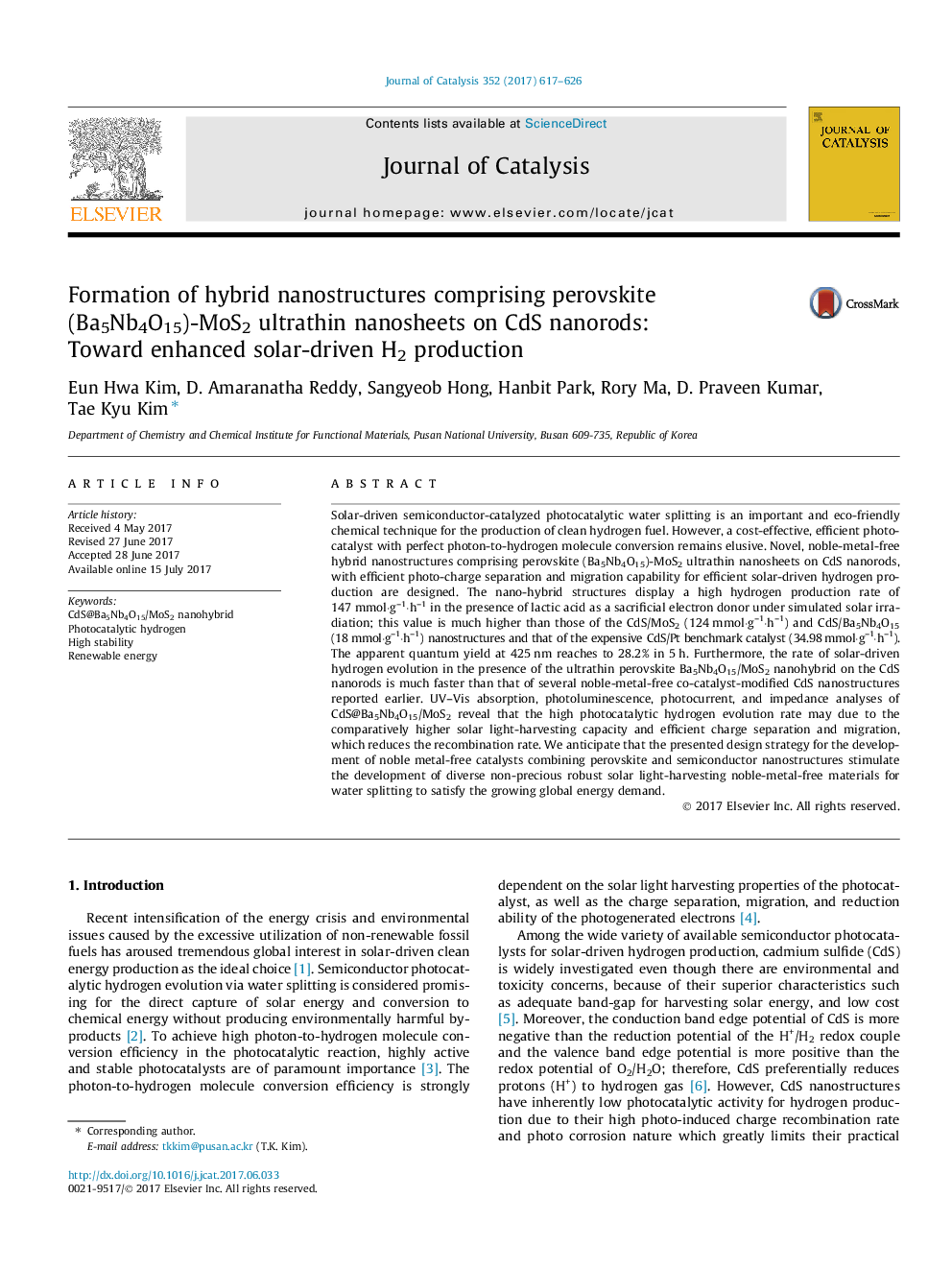| کد مقاله | کد نشریه | سال انتشار | مقاله انگلیسی | نسخه تمام متن |
|---|---|---|---|---|
| 6455469 | 1419757 | 2017 | 10 صفحه PDF | دانلود رایگان |

- A perovskite(Ba5Nb4O15)-MoS2 ultrathin nanosheets on CdS nanorods was constructed.
- A synthesized nanohybrids showed high activity for H2 production under visible light irradiation.
- A Ba5Nb4O15 and MoS2 component acted as efficient photo-charge separator and migrator.
Solar-driven semiconductor-catalyzed photocatalytic water splitting is an important and eco-friendly chemical technique for the production of clean hydrogen fuel. However, a cost-effective, efficient photocatalyst with perfect photon-to-hydrogen molecule conversion remains elusive. Novel, noble-metal-free hybrid nanostructures comprising perovskite (Ba5Nb4O15)-MoS2 ultrathin nanosheets on CdS nanorods, with efficient photo-charge separation and migration capability for efficient solar-driven hydrogen production are designed. The nano-hybrid structures display a high hydrogen production rate of 147 mmol·g-1·h-1 in the presence of lactic acid as a sacrificial electron donor under simulated solar irradiation; this value is much higher than those of the CdS/MoS2 (124 mmol·g-1·h-1) and CdS/Ba5Nb4O15 (18 mmol·g-1·h-1) nanostructures and that of the expensive CdS/Pt benchmark catalyst (34.98 mmol·g-1·h-1). The apparent quantum yield at 425 nm reaches to 28.2% in 5 h. Furthermore, the rate of solar-driven hydrogen evolution in the presence of the ultrathin perovskite Ba5Nb4O15/MoS2 nanohybrid on the CdS nanorods is much faster than that of several noble-metal-free co-catalyst-modified CdS nanostructures reported earlier. UV-Vis absorption, photoluminescence, photocurrent, and impedance analyses of CdS@Ba5Nb4O15/MoS2 reveal that the high photocatalytic hydrogen evolution rate may due to the comparatively higher solar light-harvesting capacity and efficient charge separation and migration, which reduces the recombination rate. We anticipate that the presented design strategy for the development of noble metal-free catalysts combining perovskite and semiconductor nanostructures stimulate the development of diverse non-precious robust solar light-harvesting noble-metal-free materials for water splitting to satisfy the growing global energy demand.
This work demonstrates a novel design strategy for CdS/BNOâMoS2 with applications as sunlightâdriven photocatalysts for hydrogen production.117
Journal: Journal of Catalysis - Volume 352, August 2017, Pages 617-626